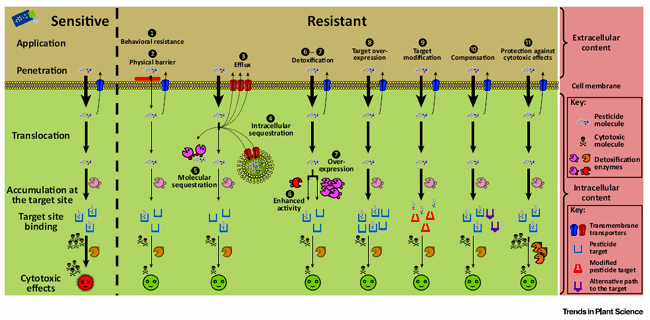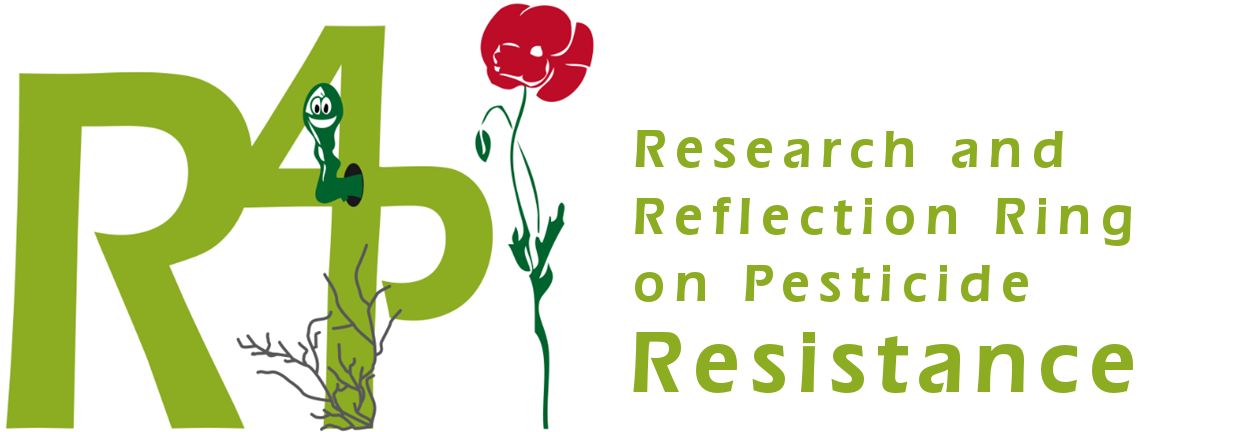R4P published in Trends in Plant Science (2016, october)
The R4P Network published an article in which the trends and challenges in pesticide resistance detection are reviewed. For the first time, methods are reviewed for resistance detection in all major pest categories, with a view to facilitating resistance assay development and encouraging exchanges among communities working on different pests. Early and accurate detection of resistance is the key of successful anti-resistance strategies and of lower pesticides inputs in agricultural landscapes.

Abstract
Pesticide resistance is a crucial factor to be considered when developing strategies for the minimal use of pesticides while maintaining pesticide efficacy. This goal requires monitoring the emergence and development of resistance to pesticides in crop pests.To this end, various methods for resistance diagnosis have been developed for different groups of pests.
This review provides an overview of biological, biochemical, and molecular methods that are currently used to detect and quantify pesticide resistance. The agronomic, technical, and economic advantages and drawbacks of each method are considered. Emerging technologies are also described, with their associated challenges and their potential for the detection of resistance mechanisms likely to be selected by current and future plant protection methods.
Key words
target-site resistance, synergism, antagonism, cross-resistance, multiple resistance, discriminating dose
Trends in Plant Science, 21 (10) 834-853 doi.org/10.1016/j.tplants.2016.06.006
